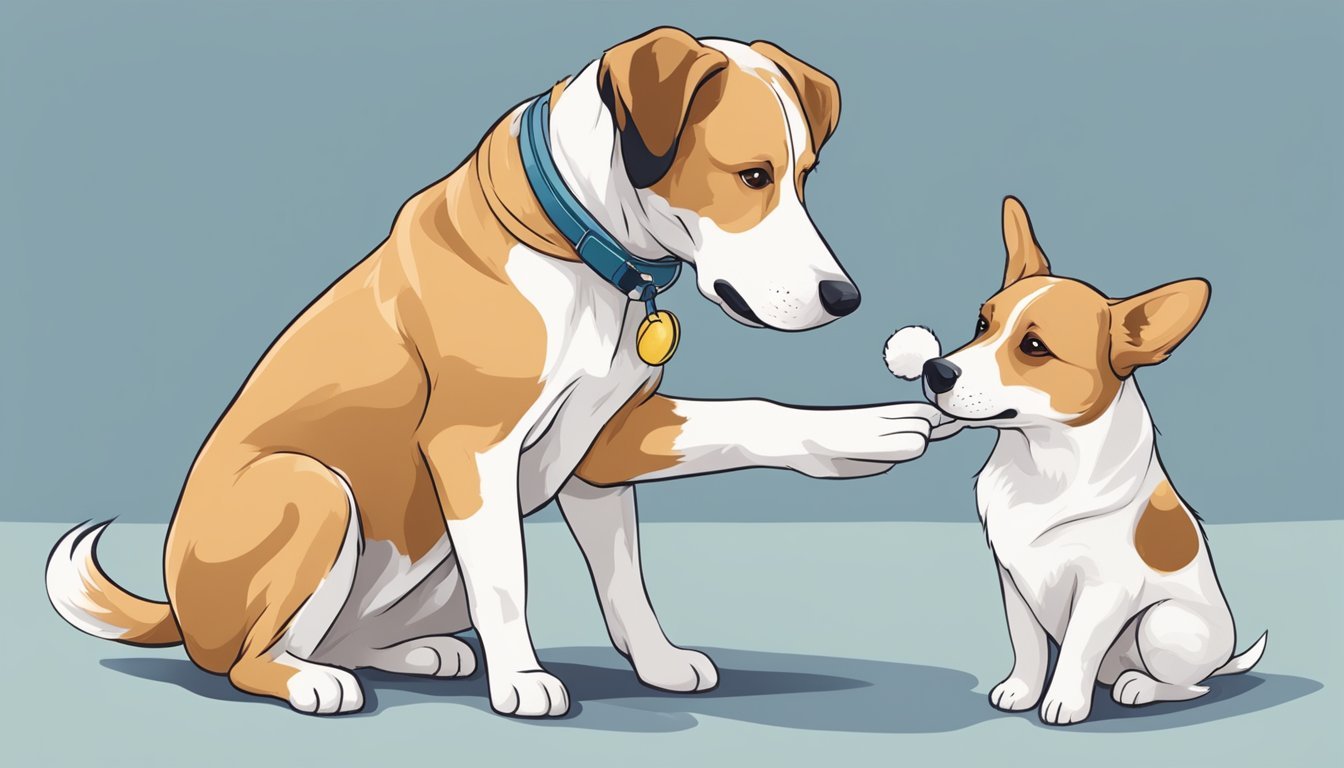Ear cleaning is an important aspect of maintaining good ear health in dogs. Proper ear cleaning can help prevent infections, reduce the risk of hearing loss, and improve your dog’s overall quality of life. While some dogs may require more frequent ear cleaning than others, it is generally recommended to clean your dog’s ears at least once a month.
It is important to note that not all dogs require the same level of ear cleaning. Dogs with floppy ears and those that swim frequently may require more frequent cleaning than dogs with upright ears or those that do not swim. Additionally, some dogs may be more prone to ear infections than others, and may require more frequent cleaning as a result. It is important to consult with your veterinarian to determine the appropriate ear cleaning schedule for your dog.
Fundamentals of Canine Ear Health
Taking care of your dog’s ears is an essential part of maintaining their overall health and well-being. In this section, we’ll discuss the anatomy of a dog’s ear and common ear problems in dogs.
Anatomy of a Dog’s Ear
A dog’s ear consists of three parts: the outer ear, the middle ear, and the inner ear. The outer ear is the visible part of the ear that includes the ear canal and the ear flap. The middle ear is located behind the eardrum and contains the three tiny bones that transmit sound vibrations to the inner ear. The inner ear is responsible for balance and contains the cochlea, which is responsible for hearing.
It’s important to note that a dog’s ear canal is different from a human’s ear canal. A dog’s ear canal is vertical and long, making it more susceptible to infections and blockages. Additionally, a dog’s ear canal has a lot of curves and twists, which can make it difficult to clean properly.
Common Ear Problems in Dogs
Ear infections are one of the most common ear problems in dogs. They can be caused by a variety of factors, including bacteria, yeast, allergies, and parasites. Symptoms of an ear infection in dogs may include:
- Scratching at the ears
- Shaking the head
- Redness or swelling of the ear canal
- Discharge from the ear
- Odor coming from the ear
Another common ear problem in dogs is ear mites. These tiny parasites can cause intense itching and irritation in a dog’s ears. Symptoms of ear mites in dogs may include:
- Scratching at the ears
- Shaking the head
- Dark, crumbly discharge from the ear
- Redness or swelling of the ear canal
In addition to ear infections and ear mites, dogs can also suffer from other ear problems such as allergies, tumors, and foreign objects in the ear. It’s important to keep an eye on your dog’s ears and seek veterinary care if you notice any signs of ear problems.
Ear Cleaning Techniques and Tips
Ear cleaning is an essential part of maintaining your dog’s overall health. By keeping their ears clean, you can prevent infections, reduce the risk of ear mites, and ensure your dog’s ears are comfortable and healthy. Here are some ear cleaning techniques and tips to help you keep your dog’s ears in top condition.
Preparing Your Dog for Ear Cleaning
Before cleaning your dog’s ears, it’s important to ensure they are calm and relaxed. You can do this by petting them, talking to them in a soothing voice, or giving them a treat. It’s also important to have all the necessary supplies ready, including ear cleaning solution, cotton balls or pads, and towels.
Step-by-Step Ear Cleaning Process
Begin by applying a few drops of ear cleaning solution to the inside of your dog’s ear. Be sure to follow the instructions on the bottle, as different solutions may have different application methods.
Gently massage the base of your dog’s ear for 20 to 30 seconds. This will help distribute the cleaning solution throughout the ear and loosen any debris or wax.
Use a cotton ball or pad to wipe away any excess cleaning solution and debris from the inside of your dog’s ear. Be sure to avoid using cotton swabs, as they can push debris further into the ear canal and potentially damage your dog’s ear.
Repeat the process on the other ear.
Aftercare and Monitoring Ear Health
After cleaning your dog’s ears, it’s important to monitor them for any signs of infection or irritation. If you notice any redness, swelling, discharge, or foul odor, contact your veterinarian immediately. You should also avoid bathing your dog for at least 24 hours after ear cleaning, as water can enter the ear canal and cause irritation or infection.
In conclusion, ear cleaning is an essential part of maintaining your dog’s overall health. By following these ear cleaning techniques and tips, you can help prevent infections, reduce the risk of ear mites, and ensure your dog’s ears are comfortable and healthy.
Frequently Asked Questions
How often should I clean my dog’s ears to prevent infection?
Cleaning your dog’s ears on a regular basis is important in preventing ear infections. However, how often you should clean them depends on your dog’s breed, lifestyle, and overall health. As a general rule, you should clean your dog’s ears once a month. However, if your dog has floppy ears, swims frequently, or has a history of ear infections, you may need to clean them more often.
What is the best homemade solution for cleaning my dog’s ears?
While there are many homemade solutions available, it is important to note that not all of them are safe or effective. In fact, some can even cause harm to your dog’s ears. It is best to use a commercial ear cleaning solution that is specifically designed for dogs. These solutions are formulated to be gentle and effective in removing dirt, debris, and excess wax from your dog’s ears.
Are there any home remedies for cleaning a dog’s ears?
While there are many home remedies available, it is important to note that not all of them are safe or effective. In fact, some can even cause harm to your dog’s ears. It is best to use a commercial ear cleaning solution that is specifically designed for dogs. These solutions are formulated to be gentle and effective in removing dirt, debris, and excess wax from your dog’s ears.
Can supplements help prevent ear infections in dogs?
While some supplements may help improve your dog’s overall health, there is no evidence to suggest that they can prevent ear infections. The best way to prevent ear infections is to keep your dog’s ears clean and dry, and to seek veterinary care at the first sign of an infection.
What is the recommended treatment for a dog’s ear infection without visiting a vet?
It is not recommended to treat a dog’s ear infection without seeking veterinary care. Ear infections can be caused by a variety of factors, including bacteria, yeast, and allergies. Without a proper diagnosis, it is impossible to determine the appropriate treatment. In addition, some home remedies may actually make the infection worse. If you suspect your dog has an ear infection, it is important to seek veterinary care as soon as possible.
How can I prevent my dog from getting ear infections after grooming?
After grooming, it is important to keep your dog’s ears clean and dry. This can be done by using a commercial ear cleaning solution that is specifically designed for dogs. In addition, it is important to avoid getting water or shampoo in your dog’s ears during grooming. If your dog is prone to ear infections, you may want to consider having their ears plucked by a professional groomer. This can help prevent hair from trapping dirt and moisture in the ear canal.


